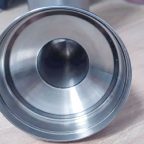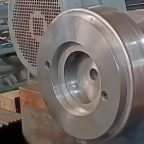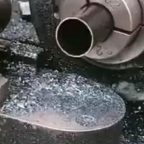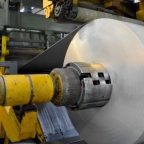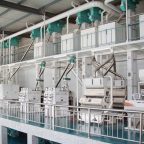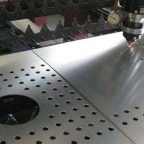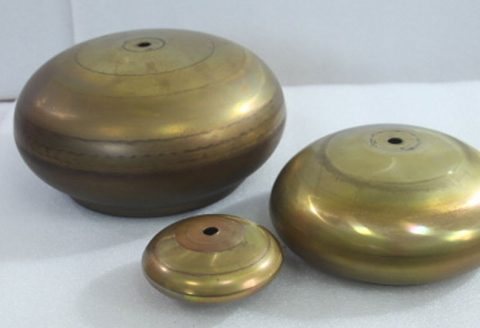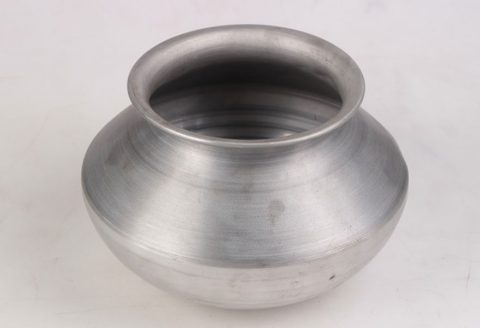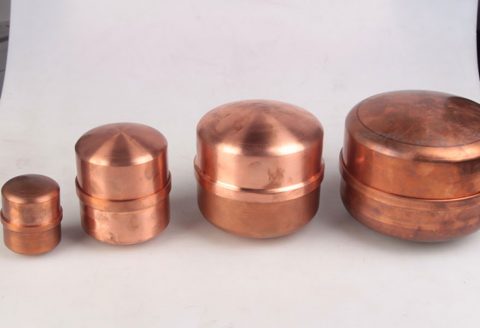
Metal spinning, also known as spin forming or spinning, is a metalworking process by which a flat metal disc or tube is rotated at high speed and formed into an axially symmetric shape using a combination of rotational force and pressure from tools. This technique, rooted in ancient craftsmanship yet refined by modern technology, is particularly well-suited for creating objects such as pie tins, which require both aesthetic appeal and functional precision. The process is valued for its ability to produce seamless, lightweight, and durable metal components with a smooth finish, making it an ideal choice for crafting pie tins that are both practical for baking and visually satisfying for artisanal or decorative purposes.
This article provides a comprehensive exploration of metal spinning as applied to crafting pie tins, covering its historical context, technical principles, material selection, tools and equipment, step-by-step processes, design considerations, and advanced techniques. It also addresses safety protocols, environmental impacts, and comparisons with alternative metalworking methods. By delving into the nuances of metal spinning, this guide aims to equip hobbyists, artisans, and professionals with the knowledge to create high-quality pie tins that meet both functional and aesthetic standards.
Historical Context of Metal Spinning
Origins and Evolution
Metal spinning traces its origins to ancient civilizations, with evidence of rudimentary spinning techniques found in Egyptian, Chinese, and Mesopotamian artifacts dating back to at least 1000 BCE. Early metal spinners used simple wooden lathes and handheld tools to shape soft metals like copper and bronze into vessels, ornaments, and ceremonial objects. These early methods relied heavily on manual skill, with artisans applying pressure to metal blanks using sticks or bone tools while rotating the workpiece by hand or foot.
The Industrial Revolution in the 18th and 19th centuries marked a turning point for metal spinning. The invention of mechanized lathes and the availability of stronger materials like steel enabled greater precision and scalability. By the 20th century, metal spinning had become a staple in manufacturing industries, producing components for automotive, aerospace, and household goods. Pie tins, as a domestic application, benefited from these advancements, as spinning allowed for the rapid production of uniform, seamless baking vessels that were both affordable and durable.
Today, metal spinning combines traditional craftsmanship with modern CNC (Computer Numerical Control) technology, allowing artisans to create pie tins with intricate designs and consistent quality. The process remains a bridge between art and industry, offering flexibility for small-scale craft projects and large-scale production alike.
Cultural Significance of Pie Tins
Pie tins, while seemingly mundane, hold cultural significance in many societies, particularly in regions where baking is a cherished tradition. In the United States, for example, pies are synonymous with home cooking, holidays, and community gatherings. The pie tin, as the vessel for this culinary art, must balance functionality (e.g., heat conductivity, ease of release) with aesthetic appeal. Metal spinning has played a key role in meeting these demands, producing tins that are both practical and visually pleasing, often featuring fluted edges or polished surfaces that enhance the presentation of the finished pie.
Principles of Metal Spinning
Mechanics of the Process
Metal spinning involves rotating a metal blank (typically a flat disc or sheet) at high speed on a lathe while applying localized pressure with a forming tool. The tool, often a roller or spoon-shaped implement, deforms the metal incrementally, causing it to flow and conform to a mandrel (a pre-shaped mold that defines the final form). The process is characterized by its ability to create axially symmetric shapes, such as cylinders, cones, and hemispheres, which are ideal for pie tins.
The mechanics of metal spinning rely on several key principles:
- Plastic Deformation: The metal is subjected to controlled stress beyond its yield strength, causing it to deform plastically without fracturing. This allows the material to take on the shape of the mandrel.
- Rotational Symmetry: The spinning process is most effective for shapes that are symmetrical around a central axis, which aligns with the geometry of pie tins.
- Incremental Forming: Unlike stamping or deep drawing, which apply force uniformly, spinning shapes the metal gradually, reducing the risk of tearing or wrinkling.
Types of Metal Spinning
There are three primary types of metal spinning, each with applications in pie tin production:
- Conventional Spinning: The metal blank is pressed against a mandrel to form the desired shape. This is the most common method for pie tins, as it allows for precise replication of the mandrel’s contours.
- Shear Spinning: The metal is thinned as it is formed, reducing its thickness while maintaining its diameter. This is useful for creating lightweight pie tins with uniform wall thickness.
- Tube Spinning: A cylindrical tube is spun and shaped, often used for creating deeper or more complex pie tin designs.
For pie tin crafting, conventional spinning is typically preferred due to its simplicity and ability to produce shallow, wide shapes with consistent thickness.
Material Selection for Pie Tins
Common Metals for Spinning
The choice of material is critical in metal spinning, as it affects both the process and the performance of the finished pie tin. The following table compares common metals used in spinning pie tins, highlighting their properties and suitability:
| Material | Density (g/cm³) | Thermal Conductivity (W/m·K) | Ductility | Corrosion Resistance | Cost | Suitability for Pie Tins |
|---|---|---|---|---|---|---|
| Aluminum | 2.7 | 235 | High | Excellent | Low | Lightweight, excellent heat conductivity, non-reactive with food. Ideal for most pie tins. |
| Stainless Steel | 8.0 | 16 | Moderate | Excellent | Moderate | Durable, resistant to rust, but heavier and less conductive. Suitable for premium tins. |
| Copper | 8.9 | 401 | High | Moderate | High | Superior heat conductivity, aesthetically pleasing, but requires coating to prevent food reactivity. |
| Tin-Plated Steel | 7.8 | 50 | Moderate | Moderate | Low | Affordable, traditional choice, but prone to rust if coating is damaged. |
| Brass | 8.5 | 150 | High | Moderate | High | Decorative, good conductivity, but less common due to cost and food safety concerns. |
Material Considerations
- Aluminum: The most popular choice for pie tins due to its lightweight nature, excellent thermal conductivity, and resistance to corrosion. Food-grade aluminum (e.g., 1100 or 3003 alloys) is non-reactive, ensuring safety for baking acidic fillings like fruit pies.
- Stainless Steel: Offers durability and a polished finish, making it ideal for high-end or reusable pie tins. Its lower thermal conductivity may result in slightly longer baking times.
- Copper: Prized for its aesthetic appeal and superior heat distribution, copper is often used for artisanal pie tins. However, it requires a tin or nickel lining to prevent reactions with acidic foods.
- Tin-Plated Steel: A cost-effective option, but its susceptibility to rust makes it less durable unless properly maintained.
- Brass: Less common due to its cost and potential for zinc leaching, but it can be used for decorative tins with proper coatings.
Thickness and Gauge
The thickness of the metal blank affects both the spinning process and the performance of the pie tin. Typical thicknesses for pie tins range from 0.5 mm to 1.5 mm (24–16 gauge). Thinner gauges are easier to spin but may result in flimsier tins, while thicker gauges offer durability but require more force and skill to form.
Tools and Equipment
Essential Tools
The following tools are required for metal spinning a pie tin:
- Lathe: A spinning lathe, either manual or CNC, provides the rotational force. For hobbyists, a small benchtop lathe with variable speed control (500–2000 RPM) is sufficient.
- Mandrel: A solid mold, typically made of hardwood, steel, or aluminum, that defines the pie tin’s shape. The mandrel must be precisely machined to ensure uniformity.
- Forming Tools: These include rollers, spoons, and pointed tools made of steel or brass. Rollers are used for broad shaping, while pointed tools refine details like fluted edges.
- Tailstock: A component of the lathe that secures the metal blank against the mandrel, ensuring stability during spinning.
- Lubricants: Beeswax, oil, or specialized spinning lubricants reduce friction between the tool and metal, preventing scratches and overheating.
Optional Equipment
- CNC Lathe: For precision and repeatability, especially in professional settings.
- Trimming Tools: For cutting excess material from the spun tin’s edge.
- Polishing Equipment: Buffing wheels and compounds for achieving a mirror-like finish.
- Annealing Torch: For softening the metal during multi-pass spinning to prevent work hardening.
Equipment Comparison
| Equipment | Purpose | Manual vs. CNC | Cost Range (USD) | Suitability for Beginners |
|---|---|---|---|---|
| Manual Lathe | Rotates the blank | Manual | 500–5,000 | High; affordable, hands-on control |
| CNC Lathe | Automated precision spinning | CNC | 10,000–50,000 | Low; complex setup, high cost |
| Wooden Mandrel | Defines shape | Manual | 20–100 | High; easy to customize |
| Steel Mandrel | Durable, precise shaping | Manual/CNC | 100–500 | Moderate; requires machining |
| Roller Tool | Broad shaping | Manual | 10–50 | High; versatile, easy to use |
| Pointed Tool | Detailed shaping (e.g., fluting) | Manual | 10–50 | Moderate; requires skill |
Step-by-Step Process for Spinning a Pie Tin
Preparation
- Design the Pie Tin: Determine the dimensions (e.g., 9-inch diameter, 1.5-inch depth) and features (e.g., fluted edges, sloped sides). Create a technical drawing or CAD model for precision.
- Select the Metal Blank: Choose a circular blank slightly larger than the final tin (e.g., 10-inch diameter for a 9-inch tin). Ensure the material is food-safe and of appropriate thickness.
- Prepare the Mandrel: Machine or purchase a mandrel that matches the desired tin shape. Ensure it is smooth to prevent surface imperfections.
- Set Up the Lathe: Mount the mandrel securely on the lathe’s headstock. Adjust the tailstock to hold the blank in place.
Spinning Process
- Mount the Blank: Center the metal blank on the mandrel and secure it with the tailstock. Apply lubricant to the blank’s surface.
- Start the Lathe: Begin at a low speed (500–800 RPM) to ensure stability, increasing to 1000–1500 RPM as shaping progresses.
- Initial Forming: Use a roller tool to press the blank against the mandrel’s edge, starting from the center and working outward. Apply steady, even pressure to avoid wrinkles.
- Refine the Shape: Switch to a pointed tool for detailed work, such as forming the tin’s rim or fluted edges. Make multiple passes to achieve the desired depth and contour.
- Annealing (if needed): If the metal becomes work-hardened (stiff and resistant), remove the blank and anneal it by heating to a dull red glow (approximately 600°C for aluminum) and cooling slowly.
- Trimming: Use a trimming tool or lathe-mounted cutter to remove excess material from the tin’s edge, ensuring a clean, even rim.
- Polishing: Buff the tin with a polishing compound to achieve a smooth, reflective finish.
Post-Processing
- Cleaning: Wash the tin with soap and water to remove lubricants and debris. Ensure it is food-safe.
- Inspection: Check for defects such as cracks, uneven thickness, or surface scratches. Verify dimensions against the design.
- Coating (if needed): For copper or tin-plated steel, apply a food-safe coating (e.g., tin or nickel) to prevent reactivity with acidic fillings.
Design Considerations for Pie Tins
Functional Requirements
- Heat Distribution: The tin must conduct heat evenly to ensure consistent baking. Aluminum and copper excel in this regard.
- Release Properties: A smooth, non-stick surface (natural or coated) aids in removing the pie without damage.
- Durability: The tin should withstand repeated use without warping or denting.
- Size and Shape: Standard pie tins range from 8 to 10 inches in diameter, with depths of 1–2 inches. Sloped sides facilitate slicing and serving.
Aesthetic Features
- Fluted Edges: A hallmark of traditional pie tins, fluting adds visual appeal and provides a grip for crimping pastry.
- Polished Finish: A mirror-like surface enhances the tin’s presentation, especially for artisanal or gift purposes.
- Custom Engravings: Advanced spinners may incorporate logos or patterns on the tin’s base for branding.
Advanced Techniques
Multi-Pass Spinning
For deeper or more complex pie tins, multiple spinning passes are required. Each pass incrementally shapes the metal, with annealing between passes to maintain ductility. This technique is useful for creating deep-dish pie tins or those with intricate rim designs.
CNC Spinning
CNC lathes allow for automated, high-precision spinning, ideal for producing large batches of identical pie tins. Programmed tool paths ensure consistency, while advanced sensors monitor pressure and speed to prevent defects.
Decorative Spinning
Artisans may use specialized tools to create textured surfaces, such as hammered or embossed patterns, on the tin’s exterior. These add a handcrafted aesthetic but require advanced skill to maintain structural integrity.
Safety Protocols
Metal spinning involves high-speed machinery and sharp tools, necessitating strict safety measures:
- Personal Protective Equipment (PPE): Wear safety glasses, gloves, and ear protection to guard against flying debris, cuts, and noise.
- Machine Safety: Ensure the lathe is properly maintained, with guards in place and emergency stops accessible.
- Fire Safety: When annealing, use a fire-resistant workspace and keep a fire extinguisher nearby.
- Ergonomics: Maintain proper posture and avoid overexertion when applying pressure with forming tools.
Environmental Considerations
Metal spinning is relatively eco-friendly compared to other metalworking processes, as it produces minimal waste (only the trimmed excess). However, considerations include:
- Material Sourcing: Opt for recycled aluminum or stainless steel to reduce environmental impact.
- Energy Use: CNC lathes consume more energy than manual lathes, so hobbyists may prefer manual methods for small-scale projects.
- Coatings: Use non-toxic, food-safe coatings to minimize environmental and health risks.
Comparison with Alternative Methods
The following table compares metal spinning with other metalworking methods for pie tin production:
| Method | Precision | Material Waste | Production Speed | Cost | Suitability for Pie Tins |
|---|---|---|---|---|---|
| Metal Spinning | High | Low | Moderate | Moderate | Ideal for seamless, lightweight tins with custom designs. |
| Stamping | High | Moderate | Fast | High | Suitable for mass production but less flexible for custom shapes. |
| Deep Drawing | High | Moderate | Fast | High | Produces deep shapes but requires expensive dies. |
| Casting | Moderate | High | Slow | High | Less precise, not ideal for thin-walled pie tins. |
Applications and Market Trends
Metal-spun pie tins are used in both home kitchens and professional bakeries. Artisanal pie shops and Etsy sellers often market hand-spun tins as premium products, emphasizing their craftsmanship and durability. The rise of sustainable, reusable kitchenware has increased demand for metal pie tins over disposable aluminum foil versions.
Conclusion
Metal spinning offers a versatile and rewarding method for crafting pie tins that combine functionality with aesthetic appeal. By understanding the principles, selecting appropriate materials, and mastering the techniques outlined in this article, artisans can create high-quality pie tins that elevate the baking experience. Whether for personal use or commercial sale, metal-spun pie tins represent a fusion of tradition and innovation, making them a satisfying project for metalworkers of all skill levels.
Maximize Tooling and CNC Metal Spinning Capabilities.
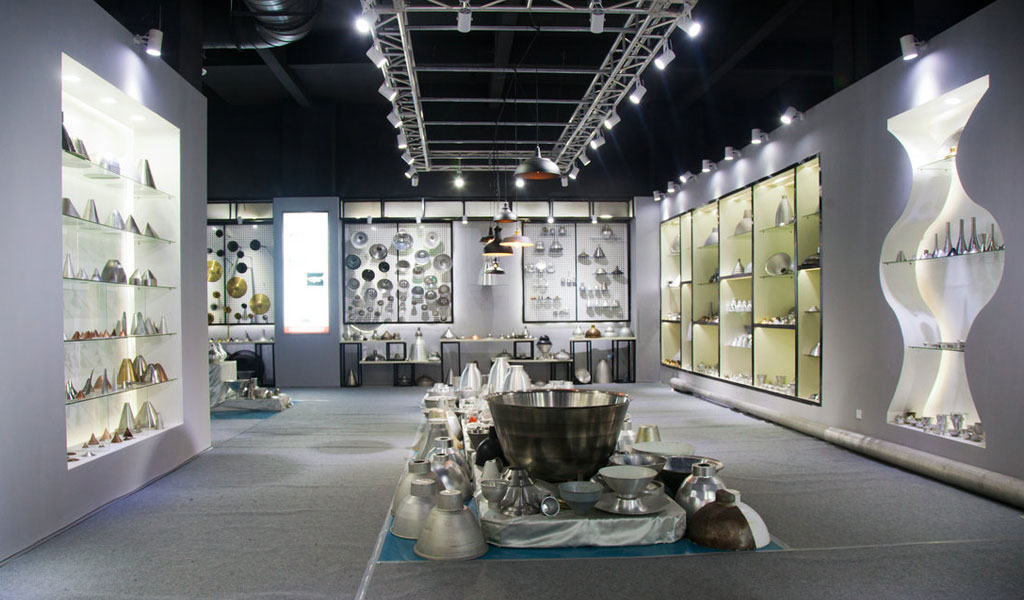
At BE-CU China Metal Spinning company, we make the most of our equipment while monitoring signs of excess wear and stress. In addition, we look into newer, modern equipment and invest in those that can support or increase our manufacturing capabilities. Our team is very mindful of our machines and tools, so we also routinely maintain them to ensure they don’t negatively impact your part’s quality and productivity.
Talk to us today about making a rapid prototype with our CNC metal spinning service. Get a direct quote by chatting with us here or request a free project review.
BE-CU China CNC Metal Spinning service include : CNC Metal Spinning,Metal Spinning Die,Laser Cutting, Tank Heads Spinning,Metal Hemispheres Spinning,Metal Cones Spinning,Metal Dish-Shaped Spinning,Metal Trumpet Spinning,Metal Venturi Spinning,Aluminum Spinning Products,Stainless Steel Spinning Products,Copper Spinning Products,Brass Spinning Products,Steel Spinning Product,Metal Spinnin LED Reflector,Metal Spinning Pressure Vessel,
